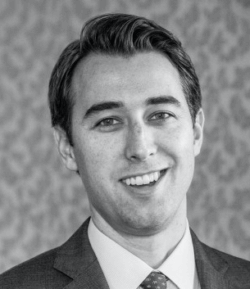February 28, 2018

Upsizing Dentistry: Putting More Bite into Primary Care
Quad/Graphics, the American printing company, was founded near Milwaukee, Wisconsin in 1971 by a husband and wife team. Harry and Betty Quadracci saw advantages in a family approach to doing business coupled with a long-term outlook and a willingness to innovate. Today, Quad/Graphics is a $4B company with facilities all over the U.S. and around the world.
As the company grew, an unexpected opportunity for innovation arose. Harry saw employee medical costs go up while complaints about insurance coverage and care quality also increased. In 1990, Quad/Graphics decided to cut out the middleman and launch its own worksite health clinic. Their new subsidiary, QuadMed, was soon managing care for 9,000 employees. As Harry promised his people: “We’ll keep you well, and by the way, if you get sick, we’ll take care of that, too.” [1]
QuadMed is now a national leader in providing employer-sponsored healthcare solutions through on-site clinics, wellness programs and fitness and rehabilitation facilities. Comprehensive is the word. In addition to primary care, vision care, specialty care and behavioral health services, QuadMed also includes expansive dental care.
Why dental? It’s not just about whiter teeth and brighter smiles. Preventive dental care represents one of the most cost-effective fronts in the larger battle for better health outcomes. All tooth and gum disease is preventable, yet untreated conditions can lead to serious illness. Early stage chronic disease often presents first in the mouth.
Despite the value to overall health, dental care provision is much more haphazard throughout the nation than it is at Quad/ Graphics. Dental benefits are primarily employment-based. Gaps in coverage and care fall mostly on the elderly, the poor and in rural areas. People with preventable dental conditions flood hospital emergency rooms.
On the business side, small group dental practices dominate a fragmented system. Entrepreneurs abound but the costs for entry, expansion and adoption of new technology are prohibitive. The sector is ready for consolidation, coordination and economies of scale.
It’s time to “think different” about the organization, delivery and purpose of dental care. Oral health is a key component of overall health. New business models are emerging that will enhance dental care with lower costs, greater access, improved convenience and a broader range of services.
Preventive dental services save money and improve health and productivity. America needs more, not less, dental care.

A CROOKED SMILE WITH LOTS OF GAPS
A century ago, most Americans expected to lose their teeth by middle age. Americans now expect to keep their teeth for their entire lives.
Water fluoridation and better preventive care drove this monumental improvement. Today, it’s possible to eliminate almost all dental/oral conditions. Gaps in dental care provision impede that achievement, however.
In 2000, the office of the Surgeon General of the United States issued its first-ever report on “Oral Health in America.” Surgeon General Dr. David Satcher described “profound and consequential disparities in the oral health of Americans [that constitute] … a silent epidemic of dental and oral disease.” [2]
The report determined that the impact was most severe on the poor, particularly children and the elderly. Little has changed for those disadvantaged groups in the 18 years since. Lack of access, high out-of-pocket costs, inadequate coverage and insufficient public understanding of the importance of oral health remain problems today. [3]
187 million Americans currently have some coverage for dental services through employer and public programs such as Medicaid and CHIP. 130 million, including Medicare beneficiaries, must pay for dental care directly out-of-pocket or through supplemental policies. The 2010 Affordable Care Act mandated coverage for pediatric dental care but excluded adult coverage. [4]
Americans suffer from unnecessarily high levels of preventable dental and oral disease. The most common conditions are cavities, abscesses, periodontitis and gingivitis or gum disease. Often these conditions deteriorate until they must be treated in Emergency Departments. In 2012, there were 2.2 million ED visits for dental issues, costing an estimated $1.6B. [5]
Emergency care rarely addresses underlying causes, however. Most patients receive pain medication and antibiotics to deal with infections, only to return to the ED as their chronic conditions worsen.
Adults under the age of 44 are the majority of ED patients with dental issues. Nearly 50% of Americans over 30 have periodontal disease. [6] Left unchecked, treatable periodontal disease can contribute to cardiovascular disease, diabetes, rheumatoid arthritis and certain cancers. Oral inflammation also contributes to systemic inflammation, a persistent cause of chronic disease.
Dental care accounts for only 4% of total U.S. healthcare costs. [7] Its impact on overall health is under-appreciated.

THE BUSINESS OF DENTAL CARE DELIVERY
Small group dental practices constitute over 80% of dental practice employees. Large practices account for only 4% of employees. [8]
The dental employment profile differs markedly from other industries, particularly medicine. Most dental practices are sole proprietorships. Traditionally, dentists are entrepreneurial and independent by nature.
Dental practices tend to be more consumer-oriented than most other medical businesses. They rely on volume and high out-of-pocket expenditures (roughly 40%) to meet revenue targets. [9] Unlike most primary care clinics, dental practices are renowned for scheduling patients diligently and reminding them when they are due for checkups. Like retail stores, dental practices offer convenience through prime locations and expansive hours of operation.
As a fragmented cottage industry under pressure to reduce costs, make capital investments and increase operational and administrative efficiency, dental care represents a significant business opportunity for consolidation and service support.

A SECTOR IN TRANSITION
Cincinnati-based CORDENTAL Group is a new entrant in this market, backed by $25M in equity capital from New York-based private investment firm, New Mainstream Capital.
CORDENTAL is a dental support organization (DSO) that offers back-office, administrative, technological and financial support so that dentists can focus more exclusively on patient care and business growth. Co-founder and CEO, Dana Soper, was previously the founder and CEO of CarePoint Partners, an alternate- site infusion therapy and specialty pharmacy provider. CarePoint expanded through 16 acquisitions across 28 sites to service more than 6,800 patients daily before it was sold to BioScrip in 2013.
Consolidation and integration in the pharmacy and infusion space improved operational efficiency, care coordination and access to capital. Soper and her co-founder, Steven Jones, see that same trend picking up in dental care.
“The situation is very similar,” Soper says, “and we’ve been there before.”
CORDENTAL brings expertise in business operations, nuance and growth to dental practice partners who have deep clinical know-how, strong customer relationships and keen understanding of their local market.
Soper notes several forces driving the trend toward consolidation and the need for infrastructure and operations support.
Demographically, dental practice leaders tend to be divided between two groups: aging boomers and young millennials. Dental practices require ongoing investment in advanced equipment, facilities and staff. Those capital demands have intensified with the need for better information technology and access to data.
Dentists over 50 wonder if they will see a significant return on their investment before they hand their practice over. New dentists, burdened by higher education debt (often between $200-$500K), may hesitate to invest in a practice, worried about risk and the cost to quality of life.
In rural and poorer areas, these challenges are exacerbated. Customers can’t always afford high out-of-pocket expenses. Fewer dentists are willing to set up shop or join practices outside urban centers.
DSOs help dentists reinvest in their practices by updating equipment, technology and facilities and by making improvements to business operations and administrative functions, such as billing and reimbursement. This allows dentists to focus more on patient care and business health.
With access to industry and practice performance data and more secure financial backing, dentists can also make different decisions about expanding services or growing their market footprint. Practice transitions are easier when business fundamentals are strong.
DSOs lift practice standards, help reduce industry fragmentation and inefficiency and increase peer collaboration. While the ownership model continues to evolve and consolidate, the practice of dental care is also changing. The emphasis on quality has intensified over the past ten years. Dentists leverage evidence-based protocols more and focus increasingly on appropriateness of care over volume of services.
The size of the dental market, the financial and transition pressures on dental practices and the ongoing need for better dental care provision create significant business opportunities for coordination and economies of scale.
The practice and positioning of dental care within the overall healthcare sector creates a promising opportunity to bring dental care and primary care into tighter alignment.

THE HEALTHCARE CONNECTION
Dentists ask their patients more health questions today. They check for oral cancer and diabetes and monitor blood pressure. Like local pharmacists, they have frequent contact with patients and often build long-term relationships. Soper thinks this clinical trend can benefit healthcare provision.
Dr. Amir Neshat, DDS, agrees. “You can’t be healthy without a healthy mouth.”
Neshat is CEO and founder of LIBERTY Dental Plan, a leading national provider of dental managed care services. LIBERTY has over 3 million members in 25 states enrolled through government and employer sponsored programs.
While still in its infancy and perhaps years away, Neshat sees signs that coordination between dental care and primary care is growing. A major barrier to integration and coordination has been a lack of aligned incentives and that is beginning to change. “The main facilitator of integration is a common EMR system,” Dr. Neshat says.
LIBERTY has similarly invested in training physicians and pediatricians in Florida and California on the basics of providing oral care. Those clinicians are incentivized to get children into regular dental care as early as possible.
Federally Qualified Health Centers (FQHCs) provide “one-stop” health and social services for their patients who often have complex health and socio-economic issues. Organizations like Family Health Centers [10] in the Louisville, KY area offer physical, behavioral and dental health services within their system.
The Harvard School of Dentistry is a major proponent of making dental care part of standard primary care for all patients. [11]
Kaiser Permanente recently opened a practice in Eugene, OR that combines three primary care physicians and a dentist. Since Kaiser operates under capitation payments, preventive measures like dental make good sense. Similarly, in Pittsburgh, PA, UPMC and United Concordia, a dental insurance provider, are working on “medical-dental integration strategy.” [12] They believe that prevention (dental and medical) saves money and improves health and wellness.

REASON TO SMILE
Preventive dental care is a no-brainer. It is a cost-effective care measure that prevents disease, reduces treatment demands (particularly on EDs) and improves lifelong health, wellness and productivity.
With proper incentives, the private market is well-positioned to fund and expand innovative dental care business models. Dentistry’s traditional sole proprietor and small practice ownership model and capital expenditure pattern has stifled innovation and access in lower-income neighborhoods and rural regions.
Enhanced scale and infrastructure investment support will reduce fragmentation and improve access, coordination and efficiency.
Better preventive dental care is also an important part of the broader national need to shift resources out of specialty/acute care and into primary care services. Managed care companies serving distinct populations are logical partners for the expansion of dental care services into primary care.
Putting more bite into primary healthcare services should be as much a national priority today as it was in 2000 when Surgeon General Satcher issued his landmark “silent epidemic” report.
Outcomes Matter. Customers Count. Value Rules.
SOURCES
1. http://www.commonwealthfund.org/publications/newsletters/ quality-matters/2009/september-october-2009/case-study
2. https://www.nidcr.nih.gov/DataStatistics/SurgeonGeneral/ Documents/hck1ocv.@www.surgeon.fullrpt.pdf
3. https://www.cdhp.org/blog/264-the-surgeon-general-s-report-14- years-later
4. http://www.modernhealthcare.com/article/20141208/ NEWS/312089929
5. https://www.dentaquestinstitute.org/system/ les/OralHealth_ WhitePaper_11317.pdf
6. https://www.dentaquestinstitute.org/system/ les/OralHealth_ WhitePaper_11317.pdf
7. https://www.cms.gov/Research-Statistics-Data-and-Systems/ Statistics-Trends-and-Reports/NationalHealthExpendData/ downloads/highlights.pdf
8. http://www.ada.org/~/media/ADA/Science%20and%20Research/ HPI/Files/HPIBrief_0815_2.ashx
9. http://www.ada.org/~/media/ADA/Science%20and%20Research/ HPI/Files/HPIBrief_0815_2.ashx
10. http://www.fhclouisville.org/about/
11. https://primarycare.hms.harvard.edu/oral-and-primary-health/
12. http://www.post-gazette.com/business/healthcare- business/2017/01/30/Private-insurers-may-lead-in-developing- systems-that-integrate-treatment-between-medical-and-dental- care/stories/201701290060
CO-AUTHOR

Christian Pesci, Cain Brothers
Christian Pesci is a Director in the Firm’s Corporate M&A Advisory practice focusing on outsourcing and multi-site services and leads the Firm’s Animal Health practice. He joined Cain Brothers in 2012 and has 11 years’ experience advising companies in a variety of merger and acquisition, capital raising, and strategic advisory transactions. Mr. Pesci’s notable transactions include the sale of Centerre Healthcare to Kindred Healthcare, the recapitalization of Results Physiotherapy by Sterling Partners, the sale of Premier Access Insurance Company to The Guardian Life Insurance Company of America, the sale of U.S. Community Behavioral to Bregal Partners, and the sale of VetCentric to Direct Vet Marketing.
Prior to joining Cain Brothers, Mr. Pesci was an Associate Vice President in the healthcare investment banking group of Morgan Keegan. He began his investment banking career at Shattuck Hammond Partners, where he focused on supporting M&A advisory, tax-exempt capital markets, and strategic advisory assignments for clients in the healthcare services sector. Mr. Pesci earned a BA in Economics from Colgate University.
Disclaimer:
The information contained in this report was obtained from various sources that we believe to be reliable, but we do not guarantee its accuracy or completeness. Additional information is available upon request. The information and opinions contained in this report speak only as of the date of this report and are subject to change without notice. This report has been prepared and circulated for general information only and presents the authors’ views of general market and economic conditions and specific industries and/or sectors. This report is not intended to and does not provide a recommendation with respect to any security. Any discussion of particular topics is not meant to be comprehensive and may be subject to change. This report does not take into account the financial position or particular needs or investment objectives of any individual or entity. The investment strategies, if any, discussed in this report may not be suitable for all investors. This report does not constitute an offer, or a solicitation of an offer to buy or sell any securities or other financial instruments, including any securities mentioned in this report. Nothing in this report constitutes or should be construed to be accounting, tax, investment or legal advice. Neither this report, nor any portions thereof, may be reproduced or redistributed by any person for any purpose without the written consent of Cain Brothers.
Cain Brothers is a member of SIPC. © 2018 Cain Brothers and Company, LLC





